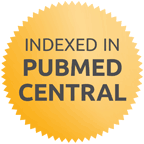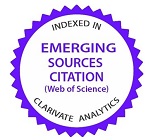Abstract
Aims: This study delves into the two-year opioid prescription trends in the Local Sanitary Agency Naples 3 South, Campania Region, Italy. The research aims to elucidate prescribing patterns, demographics, and dosage categories within a population representing 1.7% of the national total. Perspectives on artificial intelligence research are discussed.
Methods: From the original dataset, spanning from January 2022 to October 2023, we processed multiple variables including demographic data, medications, dosages, drug consumption, and administration routes.
Results: The analysis reveals a conservative approach to opioid therapy. In subjects under the age of 20, prescriptions accounted for 2.1% in 2022 and declined to 1.4% in 2023. The drug combination paracetamol/codeine was the most frequently prescribed, followed by tapentadol. Approximately two-thirds of the consumption pertains to oral formulations. Transdermal formulations were 15% (fentanyl 9.8%, buprenorphine 5.1%) in 2022; and 16.6% (fentanyl 10%, buprenorphine 6.6%) in 2023. The trend analysis demonstrated a significant reduction (p267 mcg) consumption among women, whereas a lower dosage (mcg) was calculated for men. Fentanyl pectin nasal spray accounted for approximately one fifth of all ROOs.
Conclusion: Despite limitations, the study provides valuable insights into prescribing practices involving an important study population. The findings underscore the need for tailored approaches to prescribing practices, recognizing the complexities of pain management in different contexts. This research can contribute to the ongoing discourse on opioid use, advocating for innovative strategies that optimize therapeutic outcomes while mitigating potential risks.
Recommended Citation
Cascella, Marco; Capuozzo, Maurizio; Ferrara, Francesco; Ottaiano, Alessandro; Perri, Francesco; Sabbatino, Francesco; Conti, Valeria; Santoriello, Vittorio; Ponsiglione, Alfonso Maria; Romano, Maria; Amato, Francesco; and Piazza, Ornella
(2024)
"Two-year Opioid Prescription Trends in Local Sanitary Agency Naples 3 South, Campania Region, Italy. Descriptive Analyses and AI-based Translational Perspectives,"
Translational Medicine @ UniSa: Vol. 26
:
Iss.
1
, Article 1.
Available at:
https://doi.org/10.37825/2239-9747.1047
Creative Commons License

This work is licensed under a Creative Commons Attribution-Noncommercial-No Derivative Works 4.0 License.
Included in
Health Communication Commons, Life Sciences Commons, Medicine and Health Sciences Commons




